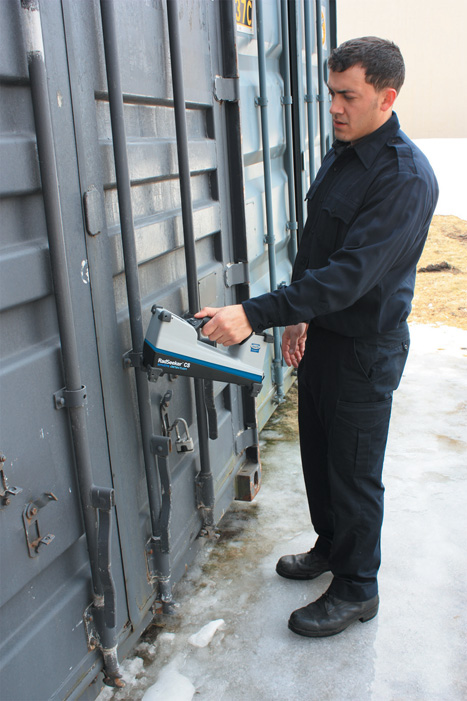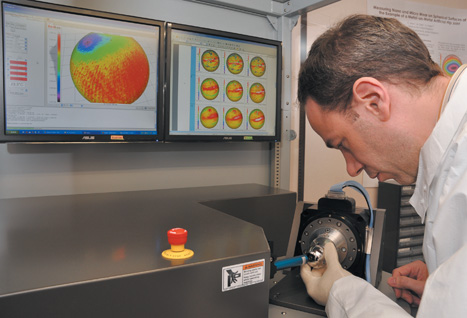At every university, in every laboratory, researchers are feeling the pressure. While pure research is a laudable goal, the true prize is increasingly seen as converting science into money; identifying commercial opportunities for the techniques and technologies developed at the benchtop. Government initiatives, industry bodies and university chiefs all seem to agree developing a ’knowledge economy’ and shifting the UK’s economic activity towards manufacturing depends on developing new products, and the university lab is the ideal place to look for the technologies to enable the industry sectors of tomorrow.

But building a business out of academic research isn’t easy. How do you spot which particular strand of research is heading towards a promising technology? How do you then create a business around that? How do you attract investment, find customers and keep it running so that it generates income?
These are questions that, as has been pointed out on television recently, many engineers are not naturally equipped to answer. It’s the task of universities’ commercial divisions to help researchers to realise the commercial potential of their work. One particularly successful organisation is SETsquared, which operates as a commercial advisor and spin-out incubator for five universities in the south of England: Southampton, Exeter, Bristol, Bath and Surrey. In the past eight years, the Southampton branch alone has spun out 11 companies, of which four have since been launched onto the stock market.
’SETsquared came out of a policy from the previous government in the mid-1990s to try to make sure that UK research was commercialised in the UK,’ explained David Bream, director of the organisation’s Southampton office. ’There are so many examples of world-leading innovation from the UK that we didn’t exploit, such as the jet engine, and the feeling in government was that this shouldn’t happen.’
The university lab is the ideal place to look for the technology to enable the industry sectors of tomorrow
While larger universities often run their own business incubators, such as Imperial Innovations at Imperial College London and Cambridge University’s Cambridge Network, each of the universities under SETsquared’s aegis is too small to justify a single organisation. ’But put them together and they’re a significant force,’ Bream said. ’What’s more, they have complementary strengths. For example, Southampton is very strong in optoelectronics and oceanography; Bristol has world-leading research in composites and aerospace; and Surrey is strong in space science.’
SETsquared is often approached by researchers looking for guidance for a particular piece of technology, Bream said. Generally, this will happen before a patent is granted. ’We quickly match the researcher with a group of people who are equipped to help,’ he explained. ’We’d have an experienced academic researcher in the same field, or one closely related; someone with experience of IP in that sector; a financial advisor; and someone who’s launched businesses. Between them, they help the researcher to write a business plan and then we work towards setting up the business.’

In many cases, but not all, this will include finding a management team to operate the spinout. ’Sometimes, the researchers will be confident that they want to run the business themselves, but we have strong links with a number of industry associations and they can be helpful in finding people who will act as mentors in some cases and as management in others,’ Bream said.
One vital part of the process is deciding where to target the launch of the technology. ’You have to identify a market,’ Bream said. ’And it has to be one where there is ready demand so that the company can grow. That isn’t necessarily where you might think it is.’
A good example of this is Symetrica, a company that specialises in security but is based on research into a very different area.
“There aren’t any short cuts or magic bullets but it definitely helps to keep things simple”DAVID BREAM, SETSQUARED
’Symetrica started off with a spectroscopic gamma-radiation detector that was used for an ESA space-astronomy mission; it was a classic piece of pure research, looking at the source of gamma bursts that weren’t understood,’ Bream explained. ’But when we were asked to commercialise it, we had to think of a sector we could launch it into. So I started by just thinking of it as a very sensitive detector. There are all sorts of applications for those in the nuclear industry, in oil exploration and in medical imaging, for example. However, there was one where there was a very obvious requirement and that was in security, to detect nuclear material that might be used in dirty bombs.’
Bream used SETsquared’s industry contacts to match the researchers, led by Dr David Ramsden of Southampton’s school of physics and astronomy, up with a mentor, Heddwyn Davies, who’d had experience in the electronics industry, including spells with GEC Marconi and Schlumberger; Davies is now the chief executive of Symetrica, while Ramsden is chief technology officer.
The US government had put out calls for suggestions of technology that could be used at ports to detect suspect radioactive materials, Davies explained. ’It was obviously a sector with an urgent need for this kind of technology and where we could expect a quick flow of revenues. For that reason, we decided to focus our development on that application and not look at the others.’
Currently, ports use detection systems housed in ’portals’ that container lorries drive through. ’These are basically “dumb portals” they can detect radiation but can’t discriminate between different sources,’ Davies said. Many natural materials emit radioactivity that trips these detectors, such as ceramics, clay tiles or even bananas. The containers then have to be searched by hand. ’What’s needed is a smart portal that would weed out these false positives.’ The spectroscopic ability of Ramsden’s gamma detector gives it the ability to discriminate between sources, he added.
Symetrica developed Ramsden’s original detector to make a system that could be used in a portal and in a hand-held detector as a second-line inspection system. The company has teamed up with Smiths Detection to develop the Radseeker, for which it provides the detector hardware and algorithms to interpret its signals. In 2006, the companies won a $222m (£139m) contract from the US Department of Homeland Security to develop detection systems. ’We couldn’t have done that without a strong focus on homeland security,’ Davies said.
The road to commercialisation is a difficult one and even specialist incubators such as SETsquared can only smooth it out to a certain extent.
’There aren’t any short cuts or magic bullets,’ Bream said. ’But it definitely helps to keep things simple. Identify a sector that has a strong need for your type of technology, enlist expert help, and formulate a strong and focused business plan that gives you your best chance of attracting funding.’
case study
scratching the surface
Southampton spinout targets non-contact metrology devices at medical implants market
Southampton spinout targets non-contact metrology devices at medical implants marketAnother successful Southampton spinout is RedLux, a metrology company specialising in devices that can examine the surface of precisely machined objects without touching them. Although the technology has a number of applications, company founder Christian Maul decided to launch the company at the medical implants market, with a particular aim at replacement hip joints.
The technology works using a phenomenon of lens optics known as chromatic aberration. When a parallel beam of light passes through a focusing lens, the lightis split into its component colours, with the indigo wavelengths focusing very slightly closer to the lens than the red. The length of the spread of wavelengths is characteristic of the lens. If a beam of white light is directed at a reflective surface placed at the average focal point, the wavelength it reflects back shows how far the surface at that point deviates from a ’perfect’ surface.
Maul devised a way to use this technique to measure a complex curved surface, which are conventionally measured using a contact probe that can scratch the surface. ’A non-contact method has obvious advantages,’ he said. ’I’d had interest from makers of hip joints, because the quality of the surfaces of the ball and socket are very important to how long the joint lasts.’ He had also received interest from other sectors, including Formula 1, but decided that the medical option gave access to a larger, more widespread market.
Maul decided that he didn’t want outside management, and SETsquared supported him in this. ’I had no management training during my degree [in Germany], he said. ’But, to be honest, it’s much easier for engineers to pick up the business knowledge they need than for general management experts to understand the engineering involved in sectors such as this and I feel that’s very important to this business.’




Nanogenerator consumes CO2 to generate electricity
Whoopee, they've solved how to keep a light on but not a lot else.